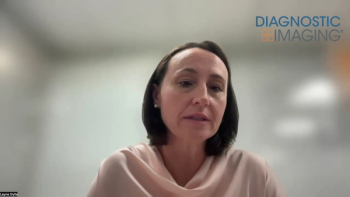
Rising health-care costs might have silver lining
Americans' insistence on high-quality, high-tech health care couldinsulate the medical imaging market from the economic downturnfacing most of the nation's industries. Company revenues fromsales of x-ray equipment grew by 11.8% in 1990, according to
Americans' insistence on high-quality, high-tech health care couldinsulate the medical imaging market from the economic downturnfacing most of the nation's industries. Company revenues fromsales of x-ray equipment grew by 11.8% in 1990, according to areport released by the Department of Commerce last month. Revenuesfor electromedical devices, which are largely composed of high-techimaging equipment, grew by 8.5%.
"The medical device industry is fairly recession-proof,"said Michael C. Fuchs, an industry analyst of medical equipmentat the Commerce Department. "People still need treatment,no matter what the economic climate is."
There is reason for concern, however. Growth rates in bothmedical equipment categories are expected to drop this year. Revenuesfrom sales of radiographic, fluoroscopic and therapeutic x-rayequipment will likely grow only about 4.9% and the electromedicalindustry only 5.5% in 1991, the report said.
Commerce analysts cite increased foreign competition as onereason for the dip. Efforts to reduce Medicare reimbursement mayretard future purchases, the report states. Nonetheless, the industrycan expect continued growth in the years ahead, according to Fuchs.
PARALLEL GROWTH IN U.S. HEALTH-CARE expenditures is the main reasonthe medical imaging industry can remain generally optimistic.In fact, Commerce analysts cited the cost of sophisticated butexpensive technology as one of the reasons for increasing health-carecosts.
The Commerce report, called The U.S. Industrial Outlook, singledout nuclear medicine, ultrasound and MRI as examples of high-costequipment. But it predicted that competitive pressures will driveboth doctors and patients to better equipped facilities.
The report forecasts a 12% to 15% rise in costs during thenext five years unless effective government measures to controlexpenditures are implemented. Annual expenditures are expectedto reach $756 billion, according to the report.
"The elderly population is increasing and consuming morehealth-care services," said Simon Francis, a health-careanalyst at the Commerce Department.
Francis noted that the growth in spending is not necessarilya negative event. "Health care is an industry and industriesare supposed to expand," he said.
Recent growth in x-ray equipment has occurred primarily ingamma cameras and other nuclear medicine equipment, digital cardiologyunits, and accessories for x-ray equipment.
Newsletter
Stay at the forefront of radiology with the Diagnostic Imaging newsletter, delivering the latest news, clinical insights, and imaging advancements for today’s radiologists.



























